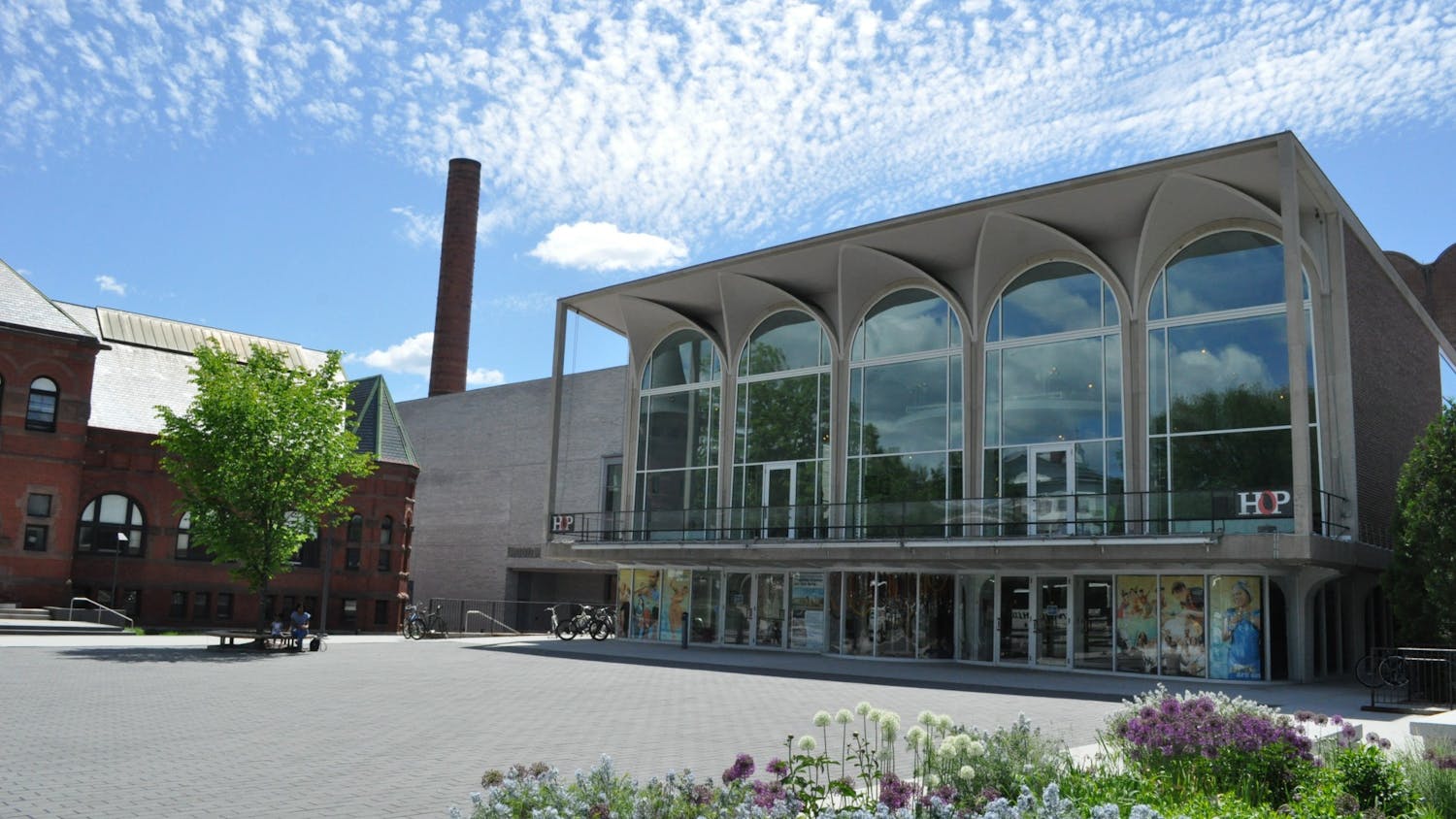"No experience is necessary for the workshops. We actually prefer to have beginners work with us they are easier to train," he said jokingly.
Elder and his fellow workshop instructors are far more than mere trainers for inept students, however, as a new Hop exhibit makes clear.
The Hop's first exhibition exclusively to display workshop instructors' projects opened Jan. 12 at the Jaffe-Fried Gallery. The exhibit is an opportunity to see the work of four of the workshops' master instructors: Elder, Dudley Whitney, Jenny Swanson and Jeff Georgantes.
Elder and Whitney have both taught in the woodshop since 1986.
"Woodworking is often a joyful enterprise, to be sure, but woodworking also provides meaningful lessons in product design, materials' properties, efficient production techniques and appreciation for the art of craft," Whitney said in his artist's statement for the exhibit.
Whitney and Elder set up a schedule of orientation sessions and special classes each term, helping students with a range of projects from skateboards to bookcases. According to the instructors, this encourages students of all experience levels to visit the workshop.
"I see everyone from freshman to graduate students come in here," Elder said. "Some leave with enough furniture to fill a house."
Indeed, most of Whitney and Elder's works in the exhibition actually come from their homes.
Elder made one of his favorite pieces on display, a black Japanese styled cabinet, for his home office. His benches also display this clash of the organized and disorganized. A bench, lent out from the White River Shambhala Center, has a cleanly shaped base matched with a rough top.
"The wood was in such bad shape I thought it would make the perfect bench," he said.
"I intend for the things I make to be used," Whitney said, pointing to a bureau that he brought from his home to include in the exhibit. "Its surfaces are hand planked and each layer of stain is rubbed back so you can see the previous one like a watermark effect."
Another one of Whitney's favorite pieces is the upper set of wings from a Fisher 404 biplane that he has been working on since 1991. The piece, titled "Yes But When Will It Fly," weighs only about 10 pounds "like a floating feather," Whitney said.
Whitney and Elder said they are always in the process of working on new things and they love seeing their students create their own work as well. A student's product will always be one of a kind, they said, whether the student stops in for a day to make a table for his fraternity or comes multiple times a year, to make anything from a guitar to a checkers table all of which are current student projects.
"There is a sort of relief I feel students have in working on projects that have no affiliation with grades," Swanson, director of the pottery studio, said. The F. A. Davidson '14 Ceramics Studio, which is located across Ledyard Bridge, provides the necessary studio space for ceramics.
Swanson's works on exhibit range from large vessel-shaped structures, called "terra cotta stacks," to ceramic plates that, when aligned properly, create a sketch of the banks of the Connecticut River.
Devoted to the medium of ceramics, Swanson said that she has remained just as captivated by its options and history since the day she began working with it. She also explained how she leaves "marks of the hand, notations of the process with some roughness, as a conscious decision on my part, paralleling the imperfections that are part of the human form."
Georgantes, director of the Donald Claflin Jewelry Studio, echoed Swanson's view, explaining that art has an innate connection with both mind and body, regardless of the medium used.
"In this digital age of ours, and with the virtualization of human experience, retaining a link to handmade' has never been more important for our students," he said in the statement for his exhibit.
All of Georgantes' exhibit pieces are narratives and reflect storytelling on some level, often starting with the title first.
One of his most notable pieces on exhibit is an apron made out of multiple sheets of copper, titled "I Never Hit Her." According to Georgantes, he initially conceptualized of the piece as a way to demonstrate the manner in which we use our personas as armor in this case, the role is that of a mother.
"We all have roles in life and for some, like a mom, the identity becomes our self. She will do anything to protect her children," he said.
The apron, along with most of his other pieces, make use of photo-etching, whereby acid is used to cut a photographic image into a metallic surface. The process is most effectively used in "When My Ship Comes In" a sculpture featuring a metal ship on top of a memento-strewn checkerboard, with an image of Georgantes' family etched onto each of the ship's sails. The piece is one of the artist's most personal works, he said.
"My mom was a single parent and used to talk about how her life would be better when her ship came in ... I learned that I had to build my own ship," Georgantes said, explaining that it was probably not until after he realized Santa Claus didn't exist that he understood the ship was just a metaphor.
The instructors' exhibit, on display until March 14, reminds viewers of the immense talent behind those who serve as guides to students in the workshops.




